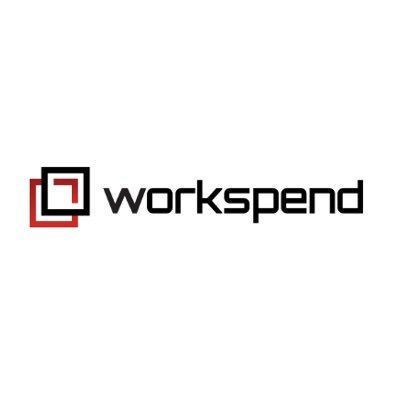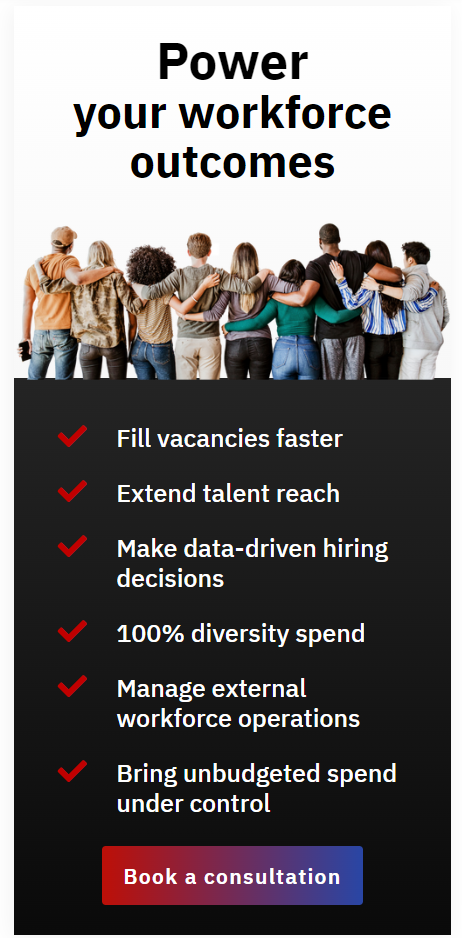Published : November 13, 2024
Ready to Upshift Your Contingent Workforce Performance?
In a world where speed and adaptability define success, businesses must evolve to stay ahead. Companies increasingly rely on contingent workers who bring specialized skills, allowing for rapid response to market demands, all while maintaining a competitive edge. However effectively managing a workforce requires more than simple engagement; it necessitates an “upshift” in how companies approach their Contingent Workforce Performance. This shift should align with organizational goals, leverage technology and focus on the importance of ongoing performance improvements.
This article explores the essential elements of a Contingent Workforce Program and how a Managed Service Provider (MSP) can enhance workforce management, boost operational efficiency, and drive strategic value.
Why Optimize Your Contingent Workforce Performance?
The value of contingent workers lies not just in filling roles but in achieving strategic flexibility and resilience. By refining your Contingent Workforce Program, you gain access to better talent, hire faster, achieve cost savings, and ensure compliance—all while staying adaptable in a competitive landscape. Onboarding becomes a seamless process, integrating contingent workers quickly and efficiently so they are productive from day one. Companies that upshift their approach to contingent workforce management are better positioned to fully leverage a flexible, efficient, and high-performing workforce.
Building a High-Impact Contingent Workforce Program
A truly effective Contingent Workforce Program encompasses several core elements.
Streamlined Talent Acquisition
- Curated Talent Pools: A well-structured program starts with access to curated, pre-vetted talent pools, ensuring that every hire meets high standards for skills and experience.
- Reduced Time-to-Fill: With optimized sourcing and recruitment strategies, you can engage top candidates faster, reducing the time-to-fill for essential roles and keeping projects on track.
Efficient Onboarding for Rapid Productivity
- Seamless Integration: Effective onboarding ensures that contingent workers quickly integrate into your organization’s culture and processes, becoming productive members from day one.
- Standardized Processes: By applying consistent onboarding practices, contingent workers are set up for success, leading to higher performance and engagement from the start.
Cost Savings through Operational Efficiency
- Automation and Integration: By automating workflows and integrating systems, organizations can eliminate manual tasks, reducing administrative overhead and freeing internal resources for more valuable activities.
- Strategic Cost Control: Data-driven analytics enable visibility into workforce composition and expenses, providing insights that support more informed decisions on Contingent Labor Costs, ultimately leading to significant savings.
Enhanced Compliance and Risk Mitigation
- Comprehensive Classification and Screening: Proper worker classification, background checks, and standardized agreements minimize risk and protect your organization from compliance issues.
- Proactive Regulatory Compliance: An effective workforce program ensures adherence to labor laws and regulations, avoiding costly fines and reputational damage.
McKinsey reports that high-performing contingent workforces can boost project efficiency by 25-30%.
Key Challenges in Contingent Workforce Management
Even with a solid framework, contingent workforce management presents unique challenges, especially as the need for highly specialized skills grows. Organizations often face challenges, including:
Talent Sourcing and Recruitment
Sourcing qualified contingent workers, especially those with specialized skills, can be time-consuming and costly. Traditional recruitment methods, however, often fall short in identifying high-quality candidates quickly. In addition, organizations may struggle with talent shortages in specific industries, making it harder to find the right fit for niche roles. Furthermore, the cost of attracting top talent can significantly increase during periods of high demand, thereby affecting overall program efficiency.
Inconsistent Onboarding and Integration
Without standardized onboarding processes, integrating contingent workers into teams and projects becomes challenging. Inconsistent onboarding practices, moreover, can lead to confusion about job roles, expectations, and company culture, which may hinder productivity. Additionally, a lack of proper training and access to necessary resources can cause delays, ultimately reducing the effectiveness of contingent workers. This inconsistency can also impact worker engagement and morale, further exacerbating performance issues.
Limited Cost Visibility
Many organizations lack centralized systems to track contingent labor costs, leading to difficulties in managing budgets and identifying savings opportunities. Without real-time visibility, it becomes challenging to assess return on investment (ROI) for contingent workers, often resulting in overspending. Furthermore, the lack of transparency makes it harder to spot inefficiencies or manage contingent labor costs in line with company objectives, which ultimately affects the financial health of the organization.
Compliance and Risk Management
Navigating the complexities of labor laws and regulatory requirements is one of the biggest hurdles in contingent workforce management. Ensuring proper worker classification, along with keeping accurate records and maintaining up-to-date contractual agreements, is crucial to avoid legal complications. Non-compliance with regulations can result in heavy fines and reputational damage. Additionally, the risk of misclassification—whether accidental or due to lack of knowledge—can expose an organization to significant legal and financial penalties.
56% of organizations have no or limited visibility into their contingent workforce and external spend, according to research by HRO Today.
The MSP Solution
A Managed Service Provider (MSP) offers the expertise, processes, and technology to overcome contingent workforce challenges and elevate workforce management. Here’s how an MSP can transform your Contingent Workforce Program:
Enhanced Talent Acquisition and Faster Hiring
- Broader Access to Talent: MSPs have access to extensive networks of skilled contingent workers, streamlining the hiring process and reducing time-to-fill.
- Improved Onboarding Efficiency: With a comprehensive MSP solution, contingent workers experience a smooth onboarding process, allowing them to reach productivity faster.
Efficiency Gains and Cost Reduction
- Workflow Automation: MSPs bring automation tools and integrated systems that streamline processes, enabling substantial time and cost savings.
- Centralized Data and Analytics: MSPs provide data-driven insights into workforce performance, making it easier to monitor costs and enhance productivity across the board.
Compliance and Risk Management Expertise
- Specialized Regulatory Knowledge: MSPs have in-depth knowledge of local and international labor laws, ensuring your organization remains compliant with all relevant regulations.
- Risk Mitigation Protocols: By standardizing contractual agreements and implementing classification procedures, MSPs help safeguard against compliance risks, allowing organizations to operate confidently in a complex regulatory environment.
Enhancing Your Workforce Performance
At Workspend, we help the organizations reach new levels of efficiency and effectiveness in managing their contingent workforce. Our technology-driven approach, coupled with data-driven analytics and a commitment to continuous improvement, ensures that your Contingent Workforce Program is tailored to your specific needs. With Workspend, you can streamline talent acquisition, improve onboarding, optimize costs, and maintain regulatory compliance—all while building a resilient, flexible workforce that drives growth.
You may also like:
Why Building the Right MSP Business Case Is Essential for Growth
Published : April 23rd 2025Why Building the Right MSP Business Case Is Essential for Growth A Managed Service Provider (MSP) can be a game-changer when it comes to handling contingent workforce management, consolidating vendor oversight, and boosting efficiency. Yet,...
AI Should Augment Human Intelligence, Not Replace It
Will smart machines replace human workers? How human intelligence can work with artificial intelligence to produce augmented intelligence.
SLAs and KPIs: How to Optimize Measuring MSP Success
SLAs and KPIs: How to Optimize Measuring MSP Success The modern workforce is increasingly dependent on contingent talent, making effective contingent workforce management of temporary staff a top priority for many organizations. A Managed Service Provider (MSP) is...





